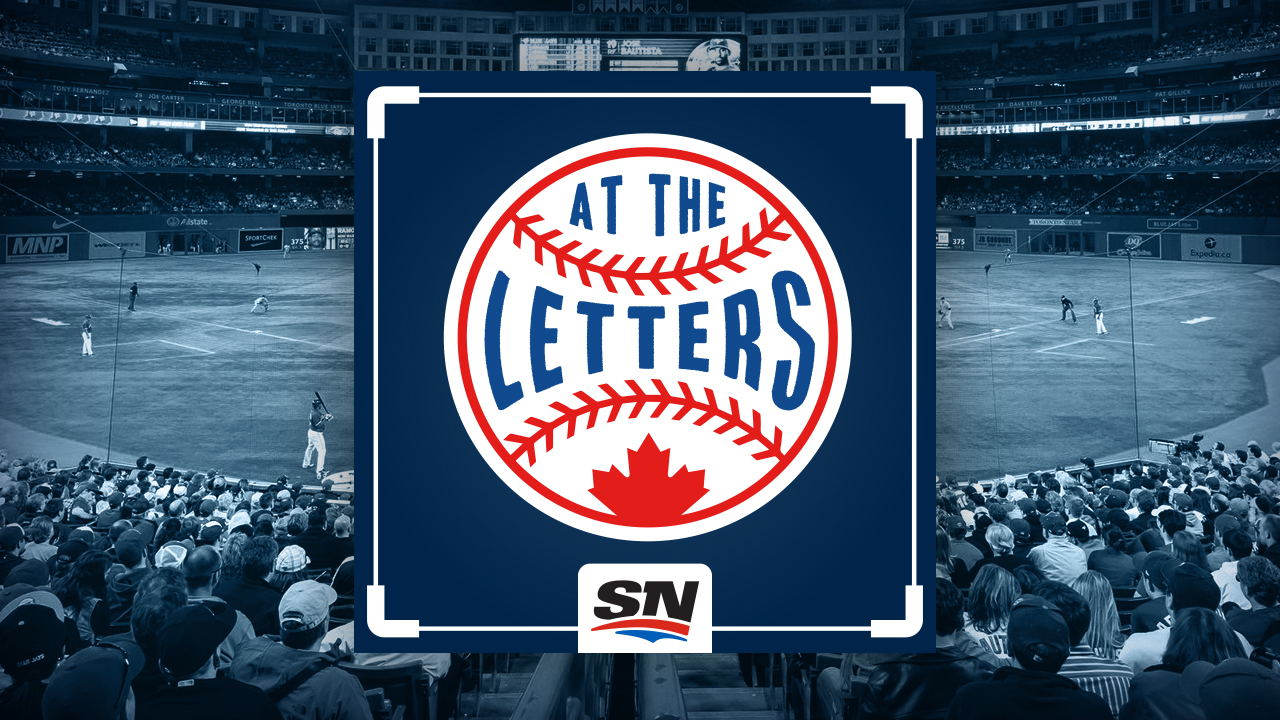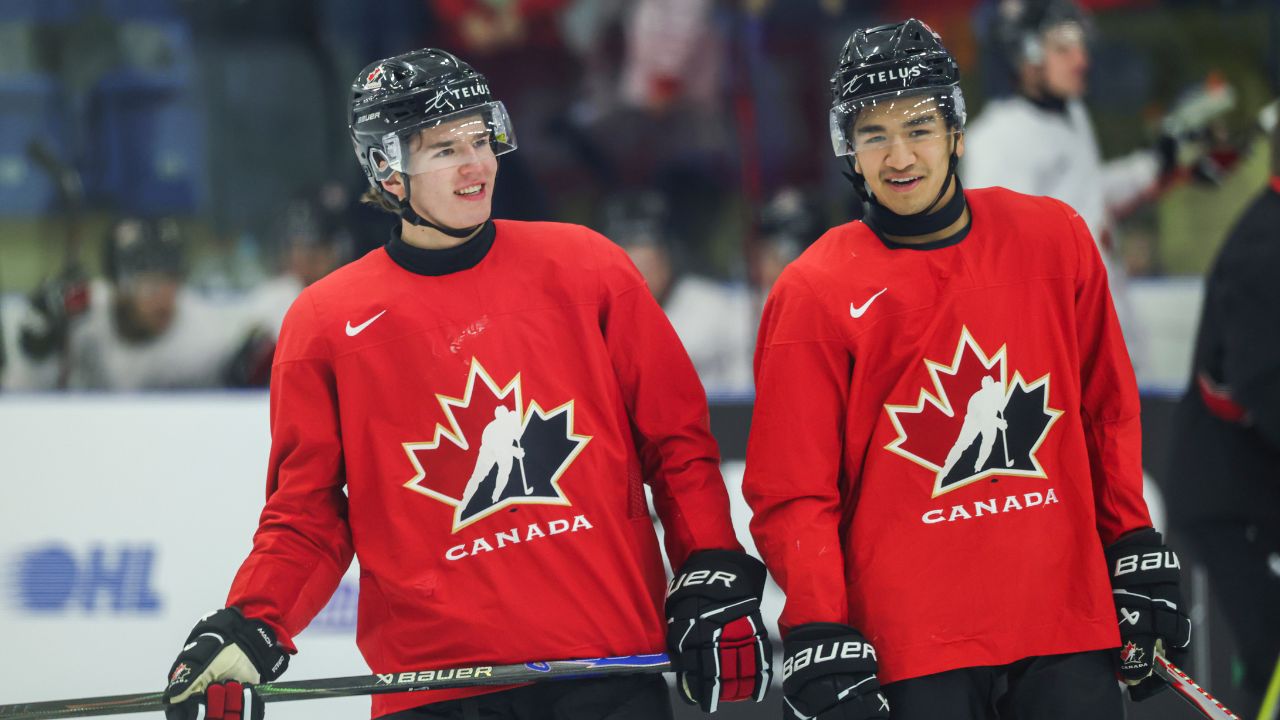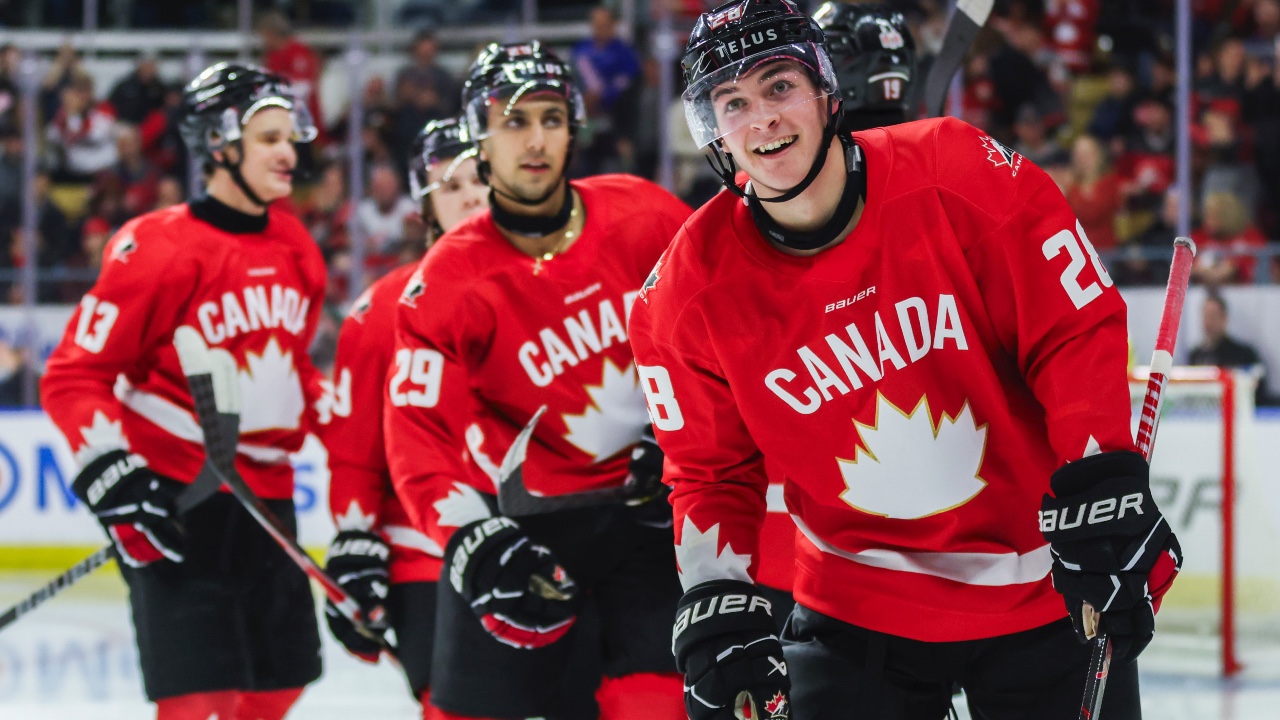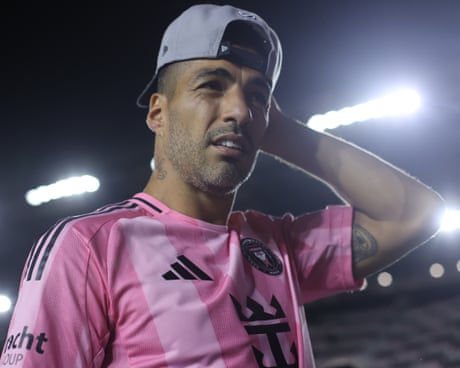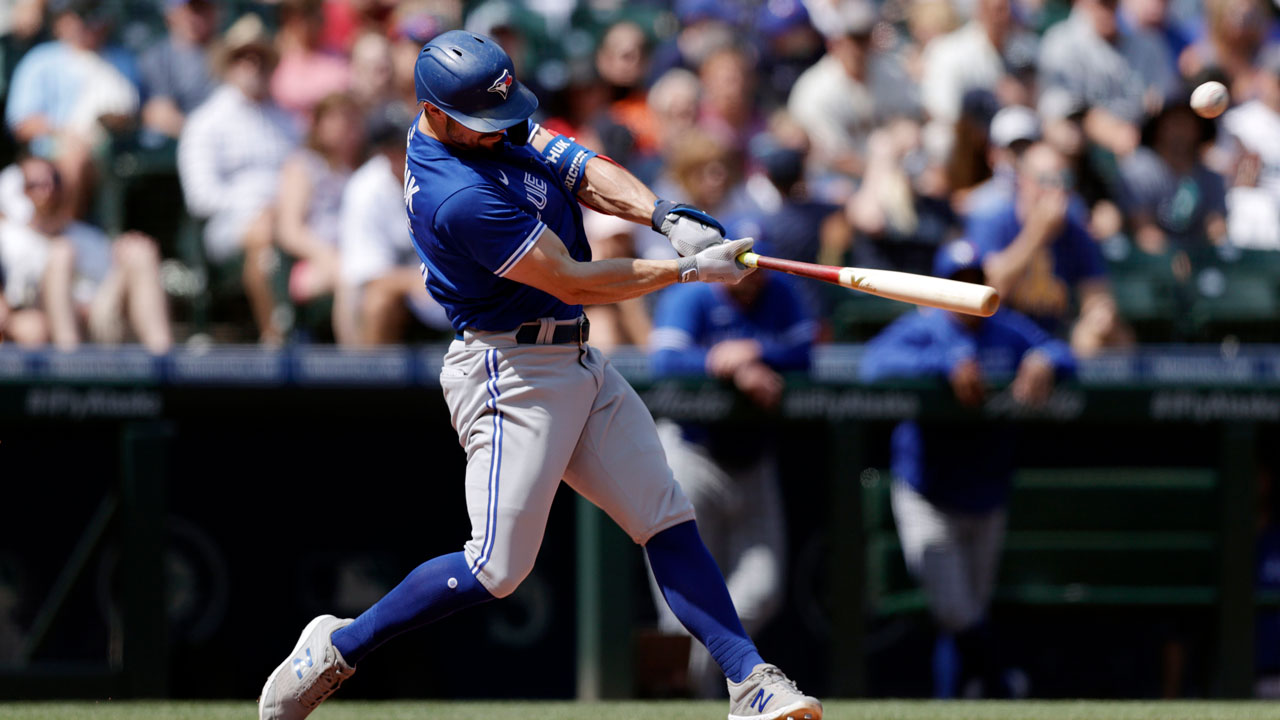
SEATTLE — It’s not enough, unfortunately, for the Toronto Blue Jays to have five everyday players atop the batting order with an OPS+ north of 120. It’s not enough to have three other semi-regulars — Randal Grichuk, Lourdes Gurriel Jr. and Santiago Espinal — hovering right around 100. It’s not enough to have MLB’s fifth-most productive offence. It’s not enough to roster MLB’s best hitter.
For the Blue Jays to be competitive, they have to score even more runs than the 5.16 per game they have to this point in the season. They need to get other semi-regulars, such as Corey Dickerson and Alejandro Kirk, playing to their offensive potential. They need Cavan Biggio, currently on triple-A rehab assignment, to rediscover the approach that worked for him in 2019 and ’20. They need Bo Bichette to come out of the power slump he’s been in for the last four weeks — the 23-year-old has eight extra-base hits since the beginning of July — and resume driving the ball like he was earlier this season.
They need every ounce of offence they can get because if this club’s going to win enough down the stretch to qualify for the playoffs it’s going to be by outscoring the opposition, not containing them. Manager Charlie Montoyo needs to be handing his relievers four- and five-run leads rather than one- and two-run cushions. He needs more room for error. Because while he can rely on his starting rotation to give him a quality outing more often than not, he can’t rely on a shambolic bullpen that’s liable to cough up a couple of late-inning runs — sometimes more.
That much was evident this weekend in Seattle, as Toronto’s bullpen gifted the Mariners a walk-off win on Friday and blowtorched a seventh-inning lead on Saturday, before its offence finally arrived Sunday in an 8-3 victory.
Toronto’s bats provided plenty of cushion for starter Steven Matz, who allowed only an unearned run through five innings. And, more crucially, a bullpen that inherited a five-run lead in the sixth and surrendered two runs over the final four frames. Without that buffer, and without a couple more insurance runs the Blue Jays tacked on in late innings, it could’ve been another disaster.
Is it a little reductive to suggest that the more runs the Blue Jays score, the better their chance of winning? Certainly. But considering the current construction of Toronto’s bullpen, which has been sub-replacement level with a collective 4.47 ERA since the beginning of June, add-on runs are of particular importance to this club.
Picking the ball up well against Mariners starter Logan Gilbert, Teoscar Hernandez hit a 427-foot solo shot in the second, his first of three hits on the day. Grichuk followed with a two-run bomb a couple of batters later, before Kirk added on with a two-run double into left the following inning. And after leading off with a double in the fifth, Hernandez turned a potential pick-off at second base into a steal of third and an advance home, as Mariners catcher Cal Raleigh’s throw sailed into centre field.
That got the Blue Jays to what appears to be their magic number: six runs. When scoring a half-dozen or more, the Blue Jays are 40-4. When scoring five, they’re 8-7. When scoring four or fewer, Toronto’s 15-43 — a .259 winning percentage.
Would that disparity look similar for most teams? Sure. But consider that the Mariners have gone 27-47 (a .365 winning percentage) when scoring four runs or fewer. The New York Yankees, 25-42 (.373). The Oakland A’s, 23-43 (.348). That extra tenth of winning percentage has mattered for the teams bunched up with the Blue Jays in the American League wild-card race. It could be the difference between qualifying for October’s coin-flip game and missing out by a few wins.
Of course, run production will be more challenging in the near term without George Springer, who could miss this week’s two-game set in Washington after spraining his left ankle Saturday night. Springer was moving better Sunday as he continued to receive treatment on the injury. But with off-days on either side of the Washington series, the Blue Jays will likely look to give him a full five days off from competition to focus on recovery and getting his ankle as healthy as possible.
How Springer recovers and responds to treatment — plus the results of any further testing or imaging — will determine if he’s able to return to Toronto’s lineup during next weekend’s homestand or whether an IL stint is necessary. But it’s worth remembering that Springer was unknowingly playing through a Grade 2 oblique strain during spring training, and believed he was ready to return from a quad strain earlier this season only to re-aggravate and worsen the injury upon doing so. Understandably, the Blue Jays will be cautious with their star centre fielder as he rehabilitates his latest ailment.
In the meantime, the Blue Jays are hoping for some positive bullpen regression in the near future as a series of players return from injury, under-performance, or both. Chief among them is Nate Pearson, who could be the most impactful addition to Toronto’s bullpen between now and the end of the season.
At his best, Pearson’s exactly what the Blue Jays lack — a hard-thrower with wicked secondary stuff who can rack up swinging strikes and punch hitters out in high leverage spots. All he did in a two-inning relief appearance during Game 2 of last year’s wild card series with the Tampa Bay Rays was strike out five of the six batters he faced, earning a whiff on 43 per cent of the pitches he threw.
Pearson made his first affiliated game appearance in two months Saturday, working a scoreless inning as an opener for the triple-A Buffalo Bisons, taking another step forward in his return from a sports hernia issue. Sitting in the high-90’s, as he does, Pearson struck out his first batter, popped up his second, and got the next to bounce out to third.
But that’s no surprise. Pearson’s stuff is elite and has overwhelmed minor-league hitters before. Whether or not he’s commanding it is the biggest question the Blue Jays want answered by the soon-to-be 25-year-old before summoning him to the majors.
And in that regard, the results didn’t reflect the process. Pearson got strikes with eight of his 13 pitches, which is good. But he wasn’t locating in the zone with the consistency he’ll need to at the big-league level. That’s why you can expect Pearson to get at least another outing at triple-A — and quite likely another one or two beyond that — before the Blue Jays feel comfortable inserting him into their bullpen.
Because in the majors, in a playoff race, in a late-inning leverage spot, there’s little room for error. The margins are too fine. The hitters, too locked in. A lack of strike-throwing can quickly cost you a game. Case in point: the bottom of the ninth Friday, when Adam Cimber suddenly lost the zone and walked two — he’d walked only one over 17 innings prior — before Brad Hand entered with the bases load, missed badly with four straight, and gifted the Mariners their 10th walk-off win of the season.
Much closer to making an impact is Tim Mayza, who threw an inning on a rehab assignment with the Buffalo Bisons Sunday and could be back in the Blue Jays bullpen as soon as Tuesday in Washington.
After a rough mid-May stretch in which he allowed multiple runs in four consecutive appearances, Mayza settled into a reliable, leverage relief role in Montoyo’s bullpen, pitching to a 1.21 ERA over 25 appearances from the beginning of June until hitting the IL last week with elbow inflammation. And, boy, could Montoyo have used him Friday in place of Hand, who was brought in to face the left-handed-hitting Jarred Kelenic and never came close to throwing a competitive pitch.
There’s also Joakim Soria — acquired from the Arizona Diamondbacks at the trade deadline before quickly hitting the injured list with a finger issue — who won’t be far behind. Soria’s resumed throwing and is pain-free, putting him on track to rejoin the Blue Jays as soon as next weekend’s homestand.
Soria isn’t the same guy who piled up 160 saves and a 181 ERA+ over his first five MLB campaigns, establishing himself as one of the game’s elite bullpen weapons before undergoing Tommy John surgery and missing the 2012 season and half of 2013. But, at 37, Soria hasn’t lost anything off his 93-m.p.h. heater, and he remains reliable in late-and-close spots, having posted FIP’s of 2.92 in medium leverage and 3.01 in high leverage this season.
Considering the current lack of trustworthy leverage weapons in his bullpen, Montoyo will take it. Beyond Jordan Romano, whose slider hasn’t been the same since MLB’s crackdown on foreign substance use, Cimber — who gave up a two-run shot to Kyle Seager in the eighth on Sunday — is the next best option the Blue Jays manager currently has to face leverage.
But as an extremely low-velocity pitcher with eighth-percentile strikeout and whiff rates, Cimber doesn’t exactly fit the mould of a late-game weapon. He relies on generating soft contact, leaving him susceptible to unfortunate batted ball luck. He also relies on defenders making plays behind him. And perhaps you’ve noticed defence isn’t exactly Toronto’s strong suit.
The Blue Jays do envision a day in the not-so-distant future when Montoyo can choose from Romano, Pearson, Mayza, and one of Soria or Hand — to say nothing of Julian Merryweather, who’s been trying to return from an oblique issue for four months — to get him strikeouts in late-and-close spots.
That would shift Cimber and Trevor Richards — whose extraordinary results this season have belied his ordinary stuff, a reality that materialized Saturday as he gave up a pair of seventh-inning homers and a late lead in the process — into the middle-inning roles they’re better suited to. Round things out with the mercurial Rafael Dolis for low leverage, plus a warm body in a long relief role, and the Blue Jays could have a functional bullpen that isn’t great, but could be good enough.
The problem with that scenario is all the “if’s” it’s incumbent on. If Pearson can command his pitches. If Romano can keep getting by without the slider he had earlier this season. If Mayza’s inflamed elbow isn’t too bothersome as he ramps back up. If Soria or Hand can still get high leverage outs like they once did. If what Cimber and Richards have been doing is sustainable. If Dolis can be trusted at all.
But every team has if’s, doesn’t it? Every pitcher, hitter, and club in the game has a flaw. The bullpen is Toronto’s, and while it ought to improve with near-term additions of Mayza, Soria, and Pearson, it’ll never be elite. That leaves the Blue Jays with one reliable route to winning ball games — outscore everyone. This is already an elite offensive team, one of MLB’s five most prolific. But it’ll need to do even better if it’s going to keep playing well into October.




